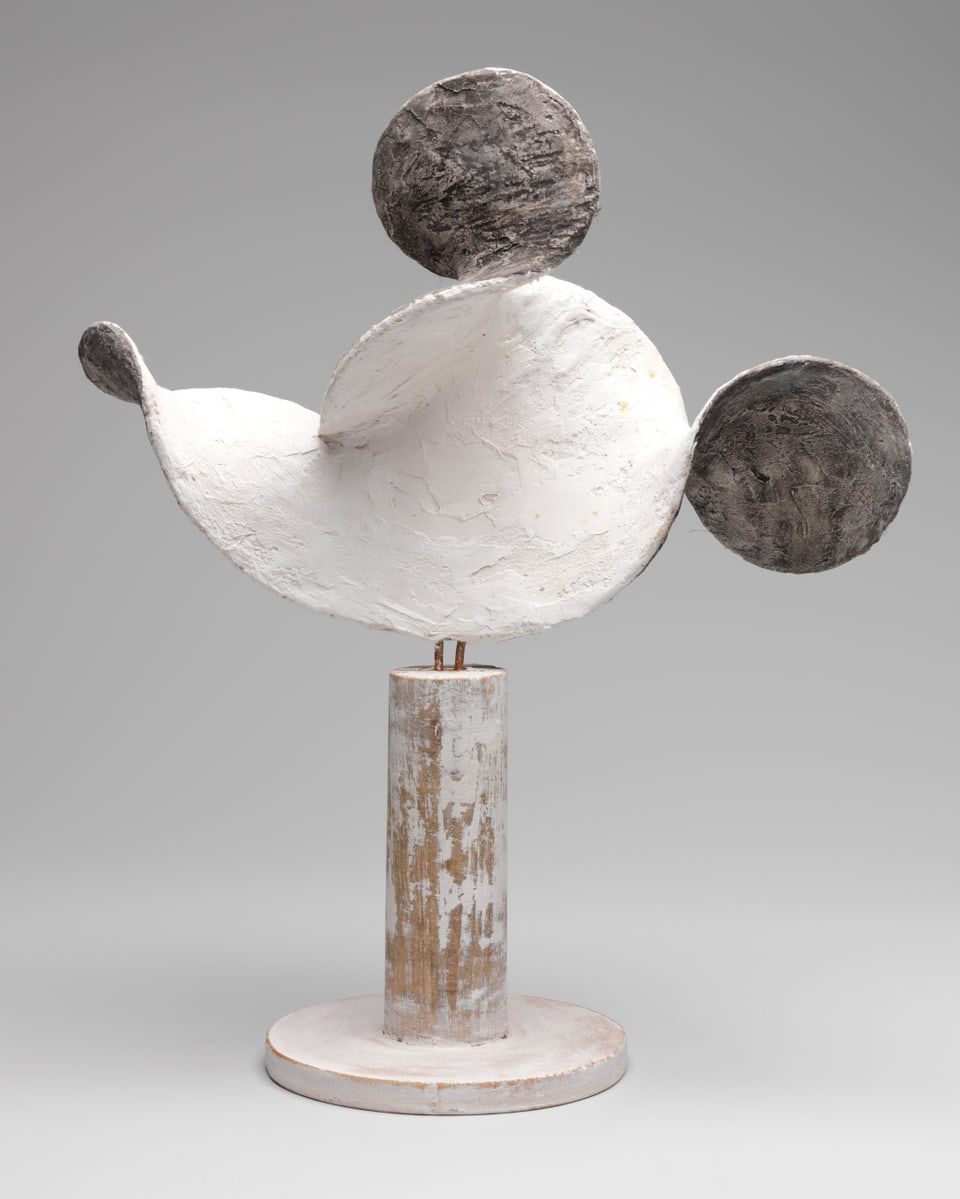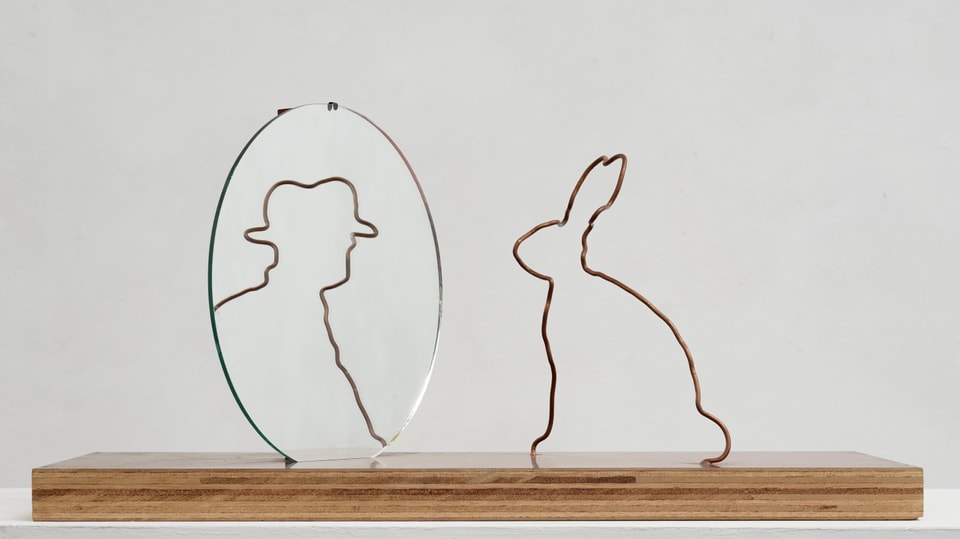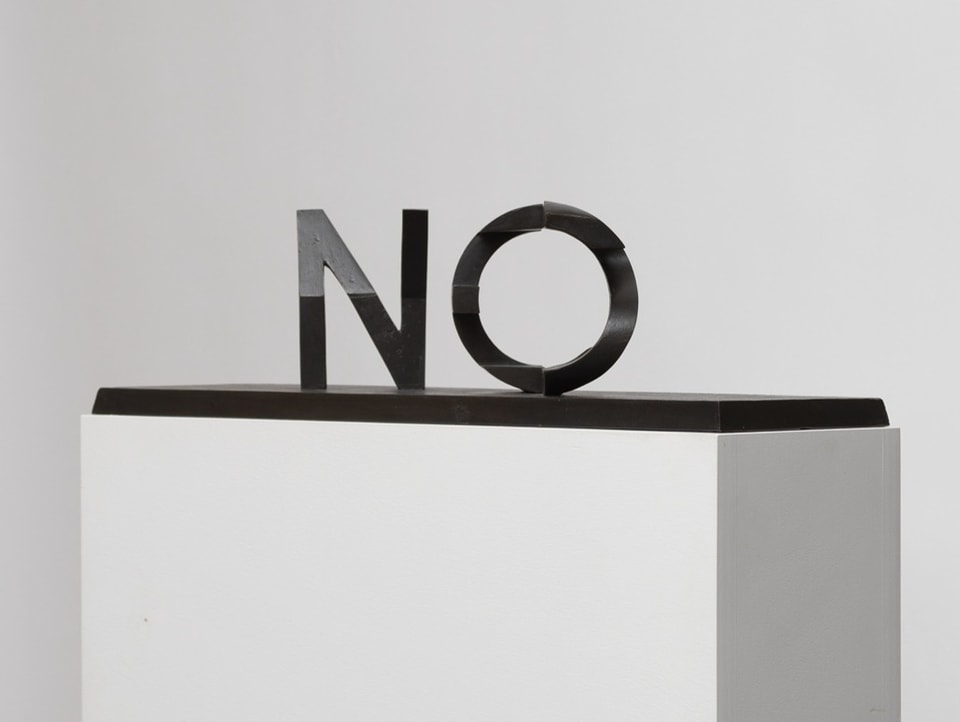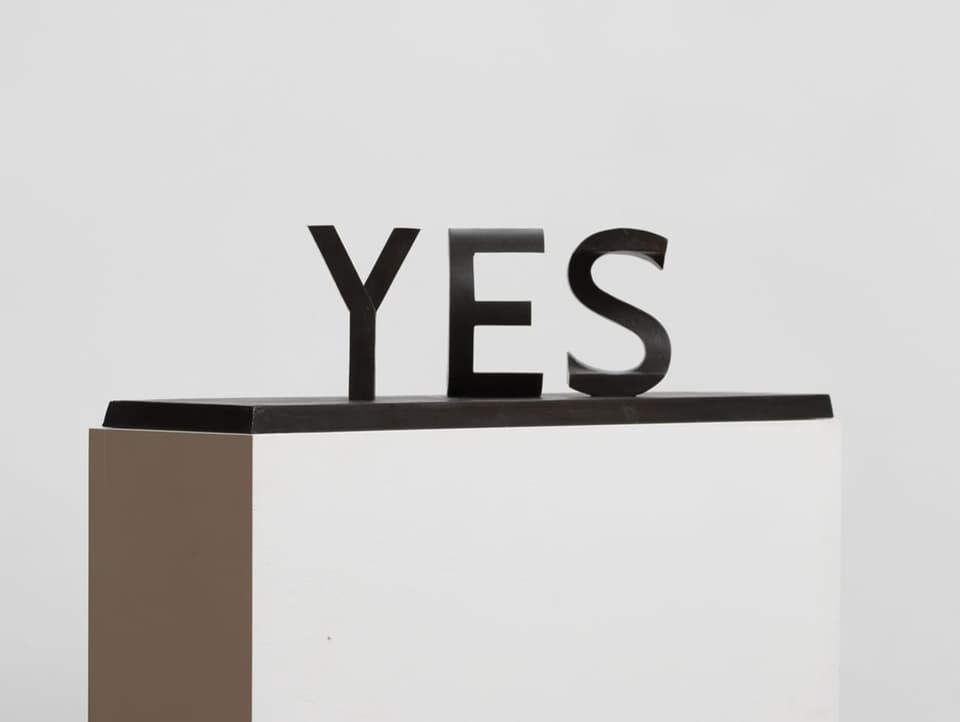Contents
Markus Raetz’s art looks good. But be careful: things can get complicated beneath the beautiful surface, because his works play with perception.
The Swiss artist Markus Raetz was a kind of magician. From the 1970s onwards he made an international career: with drawings, pictures, installations and sculptures. And he put a smile on his audience’s faces, no matter where he exhibited.
That may sound cheesy, but it’s still true today. This can be checked in the first major retrospective after Markus Raetz’s death in 2020.
Difficult things made easy
The exhibition in the Kunstmuseum Bern is dedicated to the sculptures of Markus Raetz. It shows how light and mobile what is usually static and heavy on a base can be.
Legend:
“Hasenspiegel” (1988): Markus Raetz uses a bent wire and a mirror to trick our perception: depending on the perspective, the wire becomes a rabbit or a man in a hat.
Estate of Markus Raetz, photo: SIK-ISEA © 2023, ProLitteris, Zurich
At Raetz everything changes. “Everything flows, nothing is fixed,” says Stephan Kunz, artistic director at the Bündner Kunstmuseum, who curated the exhibition in Bern.
He animates without animation
A small black and white sculpture on a base is not initially recognizable as anything specific: it could be an abstract shape, a jellyfish or a dancer with a wide skirt.
Anyone who walks around the base will experience how the shape changes: some things become more pointed, others ball up into two round things. And suddenly the shape is recognizable as Mickey Mouse.

Legend:
See what you want: “Form in Space” (1991/1992) can represent an abstract work – or Mickey Mouse.
Estate of Markus Raetz Photo: SIK-ISEA, © 2023, ProLitteris, Zurich
With the sculpture “Form in Space” Markus Raetz stages a spectacle of perception and lets the forms dance through the movements of the viewer. If you continue walking, you can watch the shapes on the base disassemble again.
Nothing stays stable here
Markus Raetz is a trickster as well as an artist, his works are as much art as they are visual jokes with a healthy dose of poetry. No wonder, they are ideal for being filmed or photographed and for getting a few likes on social media in the art-loving bubble.
But as subtle and funny as it all seems, caution is advised: the objects are not harmless. Anyone who looks for longer will lose their way on the spin test systems for human perception.
Markus Raetz’s famous word sculptures, for example, can suddenly plunge you into an abyss of pressing questions. Again, things that are usually stable are transformed here.
Anyone who walks around the sculpture will see how the letters first come together to form “YES”, then “NO” and then “YES” again. The letter scree of the intermediate stages is interesting, but our eyes cannot read it.
Hilarious contradictions
If something can now effortlessly be both “yes” and “no”, the dualism that has once again characterized large parts of our lives since digitalization is artfully put on the spot.
Then there is either total fickleness, pure relativism, which dissolves everything into perspectives. Or the thing and thus reality itself are not fixed and stable, but rather changeable and “fluid”, both yes and no.
However you find your way out of this epistemological and perceptual quandary, it is rarely possible to think about contradictions and their resolution as happily as in the company of Markus Raetz’s works.


